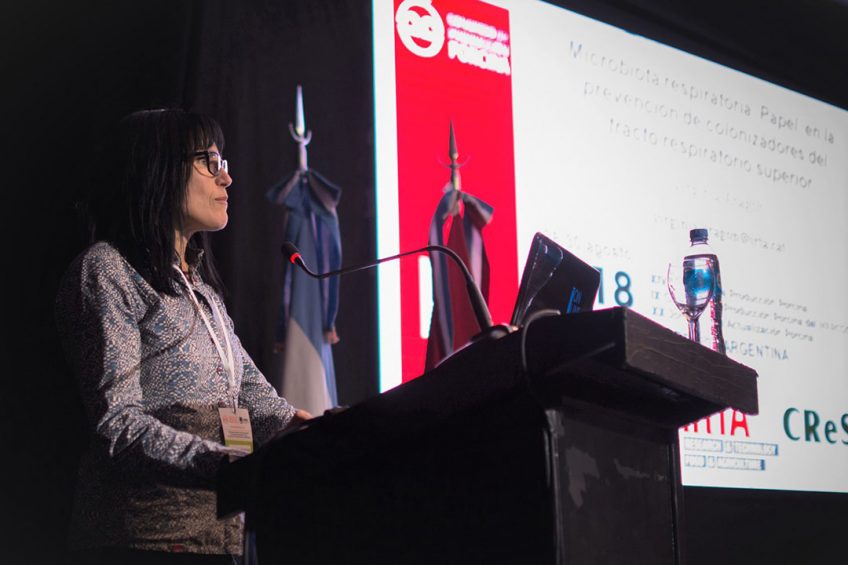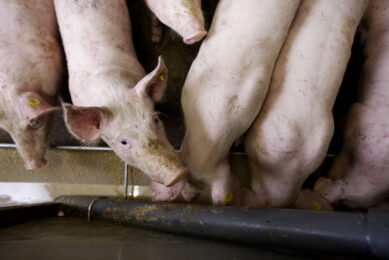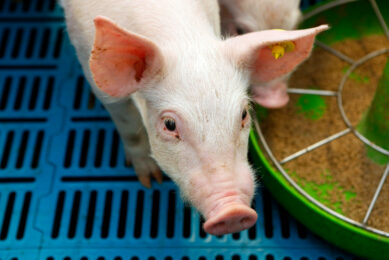Glässer’s Disease future treatments may include probiotics

Probiotics may well have a role to play in future prevention of Glässer’s Disease, a respiratory problem affecting mostly young pigs.
So much has become clear from a recent presentation, given by Virginia Aragon, PhD, attached to the Spanish research institute CReSA. She spoke at the 14th Swine Production Congress in Córdoba, Argentina, held 28-30 August, 2018. A news release relating to her presentation as well as a video interview were published recently on the website of CReSA.
Dr Aragon said that usage of nasal probiotics, different to the well-known probiotics, could be one of the strategies, next to the application of vaccinations, in order to reduce antibiotic use as a preventive treatment. She added that probiotics have yet another advantage: they may offer protection against other respiratory conditions as well. As the research is not yet published in scientific journals, exact details about the type of probiotic will follow at a later stage.
Relevant diseases for weaning pigs
During her presentation, Dr Aragon explained that Glässer’s Disease and Streptococcus suis are responsible for about 10-30% of production losses in the weaning phase.
She added that the consequences of respiratory diseases like Glässer’s Disease in Spain and Europe are primarily economic. She said, “it means a lot of costs in medication and lack of productivity of the animals,” which is why pig farmers keep both diseases as 2 of the most relevant in the field.
Mixing pigs from different origins
In a 2017 contribution to the Spanish-language website Porcino.info, Dr Aragon said that, due to the way the infection is transmitted, “mixing pigs from different origins and ages is a risk factor that needs to be taken into account when controlling the disease.”
Even though Glässer’s Disease can be treated with antibiotics, she said that it is important to remember that Haemophilus parasuis is highly resistant. As a result, preventive measures have to be taken in order to control it in case outbreaks are recurring.
An accurate diagnosis can rule out other bacteria
In that article, she went on to explain that an accurate diagnosis can rule out other bacteria such as Streptococcus suis and Mycoplasma hyorhinis. After all, these pathogens are responsible for similar types of lesions in weaning piglets. They can even infect the animals in conjunction with Haemophilus parasuis.
An exact determination of the pathogen can lead the use of the right control measures. That is why recent investigations have been aiming at an exact diagnosis of the strain using PCR, Dr Aragon said. That technique is not only fast, but also permits the identification of Haemophilus parasuis presence and the potential virulence of the strain, even when the organism is no longer viable.

Read more about Glässer’s Disease as well as other pig health problems in the Pig Progress Health Tool
Research funding, the main challenge
For researchers, finding sponsors for research work is a big challenge, yet it is key to product development. At her presentation in Argentina, Dr Aragon used the example of a prototype vaccine created by a very small company which did not have sufficient economic potential to complete the research. The same goes for the development of a probiotics strategy. Currently, they are not sufficiently developed to be commercialised. For that reason, these solutions are not appealing enough for companies yet.
“Everything costs effort,” said Dr Aragon when asked about the proximity of the finding of the ultimate preventive treatment for Glässer’s Disease. Policies and regulations are key to the commercialisation of new products, so it is her hope that in a couple of years from now the research will bear fruit.
Glässer’s Disease – what is it again?
Glässer’s Disease is a systemic condition caused by the Haemophilus parasuis bacteria. It is transmitted either by direct pig-to-pig contact or by aerosols. It mainly attacks young pigs, 3-6 weeks of age, which show symptoms such as fever, loss of appetite, coughing and breathing problems. Their joints can be swollen and, in some cases, there might be swelling on the pigs’ faces or nervous symptoms that indicate the presence of meningitis.











